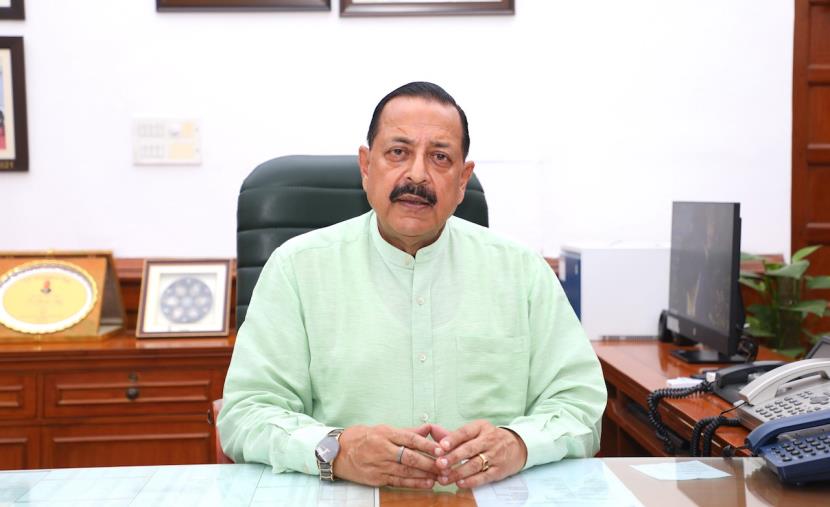Ujh Multipurpose Project being revived, surplus water not for Pakistan: Dr Jitendra

Jun 14, 2025
JAMMU: In a significant decision by the Central Government, the much delayed Ujh Multipurpose Project in district Kathua of Jammu & Kashmir, which had been pending for last several decades, is being revived and the revised plan of the project shall be prepared by the Ministry of Jal Shakti in close collaboration and inputs from the Ministry of Home Affairs since there are also several security aspects associated with this project.
The new DPR and the revived project will make sure that the surplus water emanating from the project is not allowed to flow into the Pakistan territory and a reoriented plan will be evolved to make sure that this water is consumed on the Indian side in the UT of Jammu & Kashmir or the neighbouring States like Punjab, Haryana etc.
This was disclosed here today to the media by Union Minister of State (Independent Charge) for Science and Technology; Earth Sciences and Minister of State for PMO, Department of Atomic Energy, Department of Space, Personnel, Public Grievances and Pensions, Dr. Jitendra Singh, who also happens to be the Member of Parliament representing Udhampur-Kathua-Doda Lok Sabha constituency.
Pertinent to mention that the very first investigations on the Ujh Multipurpose project started way back nearly a century ago and after independence, the project was declared a National Project in 2008 by the then UPA government, but after that no headway was made.
After Dr. Jitendra Singh was elected as the Member of Parliament for the first time in 2014, he took up the issue again and had been constantly following it up on a day-to-day basis. There were several issues involved including escalation of cost with the passage of time and also the issue of utilisation of the surplus water, without allowing it to flow over to Pakistan.
However, in the aftermath of the recent incidents leading to the suspension of the Indus Water Treaty, the Ministry of Home affairs has also taken up the project because it will also ensure strict surveillance of the riverine route being taken by the terrorists for infiltration and further movement to the mountains of Billawar and the surrounding regions.
The development also comes in the wake of intensified security arrangements in Jammu & Kashmir especially to strengthen the anti-infiltration grid and anti-terrrorism grid following April 22 Pahalgam terror attack in which 25 tourists and a local person got killed. The project has gained further significance following reports that Urj river area is being used by terrorists for infiltration from Pakistan.
Expressing satisfaction over the new development, Dr. Jitendra Singh said that the construction of Ujh Multipurpose Project will not only address the issue of irrigation of the entire region but will also supplement strict surveillance of the route to check infiltration attempts.
There is a possibility of a new DPR being prepared, which will not only address the issue of security concerns related to infiltration but will also supplement irrigation of the area which amounts to several thousand hectares and power generation of significant magnitude. The new DPR and the revived project will make sure that the surplus water emanating from the project is not allowed to flow into the Pakistan territory and a reoriented plan will be evolved to make sure that this water is consumed on the Indian side in the UT of Jammu & Kashmir or the neighbouring States like Punjab, Haryana etc.
Even though the Indus Water Treaty for the time being remains suspended but the matter of fact is that the Indus Water Treaty signed in 1960 had allocated the water of the Eastern rivers that is Ravi, Beas and Satluj to India and Ujh being a tributary of river Ravi was meant for irrigation and other uses on the Indian side. However, substantial flow from these rivers continued to enter Pakistan and remained unutilised by India despite the fact that the issue was taken up several times before the then UPA government.
Dr Jitendra Singh said that besides addressing the security concerns and providing irrigation, the dam would also mitigate the annual flooding possibilities thus sparing the local population from this re-current havoc. He further added that the inherent benefits of the project, which were often understated, are also equally significant. For example, tourism and associated infrastructure will create new livelihood opportunities and unlock the economic potential of the region, he said.
The exact area which will be benefited from the irrigation following the establishment of the project will be worked out once again depending on the new DPR. However, earlier the estimated potential area of irrigation went to the extent of 7,6269 Hectares and was later said to have even increased.